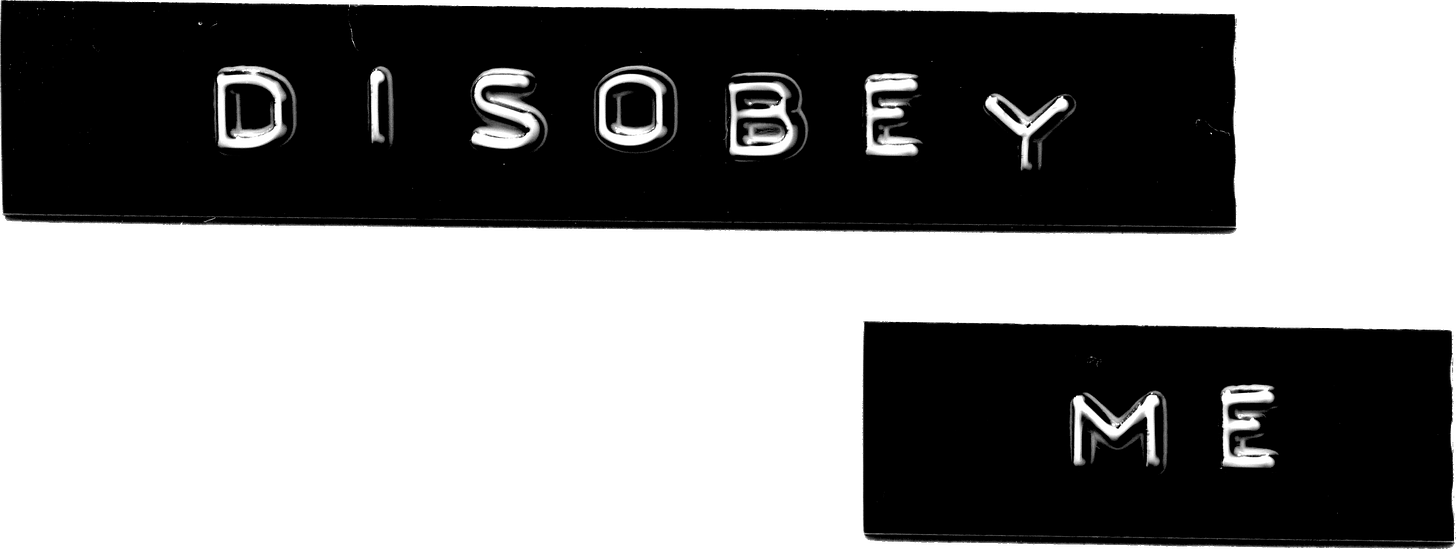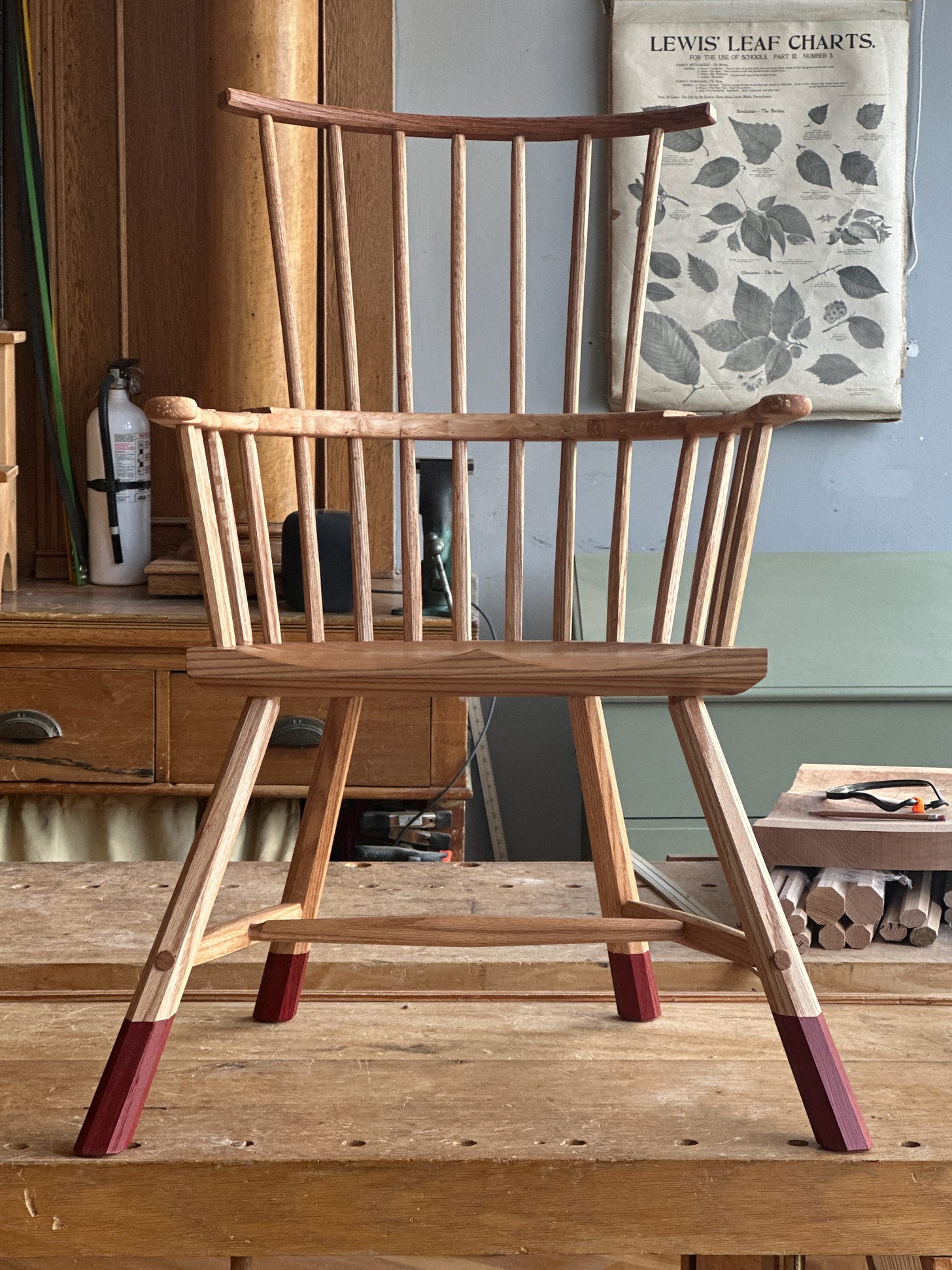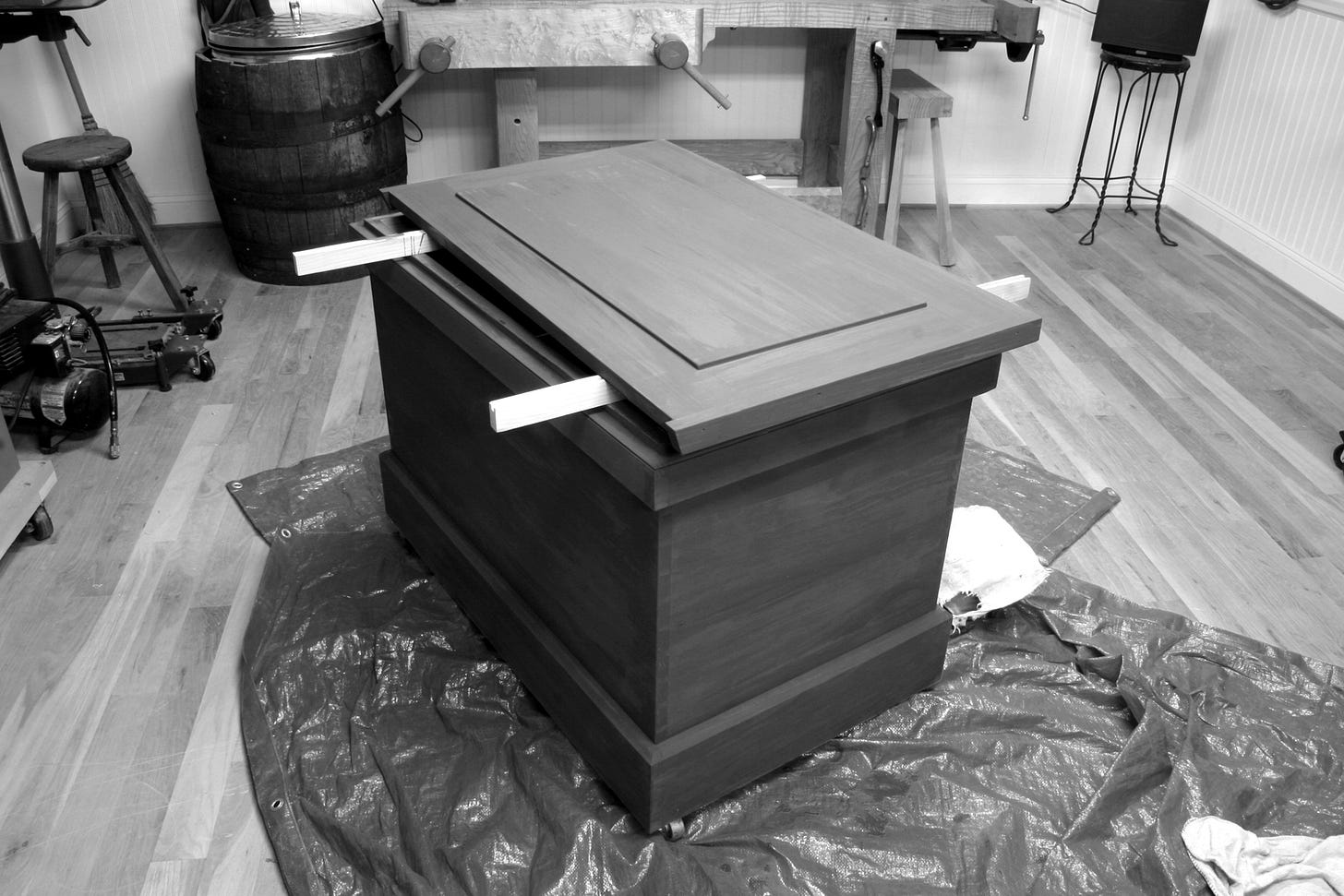Revise This
Let me put it this way: If you’ve been working in the craft every day for 29 years and your opinions on tools, joinery and finishing haven’t budged a bit, you likely…
lack curiosity
don’t really care about your craft
are unwilling to try new things
like your noodles a little too soft
always have to win an argument
have a wee-wee brain.
Though I’ve been inconsistent during the last 29 years, I’m glad my ideas about woodworking have changed and continue to. This means my brain still allows new data to enter through the ear hole, plus it processes these new experiences and allows the news to trickle to my fingers.
I’ll admit this churn is traumatic at times. Sometimes I feel I’m being reborn in the craft every few months. My head gets mashed up in the birth canal. My eye holes are filled with a sludgy, cheesy goo. And my bits hurt.
Here’s an example of a typical change: Three years ago, I was happy to make an entire stick chair out of oak. Now I’m blinking terrified of that idea because I’ve embraced second-class woods such as elm, sycamore and soft ambrosia maple for seats and arms. Today I cannot imagine using an oak seat because of the risk of it splitting during assembly.1
But if you read “The Stick Chair Book: Revised Edition” you will find that I’m only a bit wary of oak seats. I am not consumed by fear.
People change. Well, I know that I do.
This month I am deep into revising “The Anarchist’s Tool Chest,” which was released in 2010 (written in 2008 and 2009). As I began the revision I wondered: How much of the text should I change? Should I start from first principles? Or should I nip and tuck?
To answer the above questions, I did something I hadn’t done in 10 years. I read my book from start to finish. Then I knew what I had to do. First, I had to revise the list of tools in the chest. I spent a day looking over the tools in my beat-up tool chest. I removed a bunch of oddballs that were in the chest for no good reason.
Then I compared my 2025 tool set with my 2008 tool set.
The differences were subtle. Most of the changes were rearranging what was important vs. what was nice to own. Honestly, the biggest change was putting the smoothing plane in the category of essential planes (before it was in the “nice to have” category).
You might think: Damn Schwarz, you were stupid wrong about the smoothing plane in 2008.
But hear me out. When I wrote the book, I was happy to use my jack plane as a smoothing plane. I’d simply swap out a heavily cambered iron for a lightly cambered iron. These days, I’d rather have a dedicated smoothing plane. And (because I have to work faster today than I did in 2008 when I wore the mantle of “magazine editor”), I want the smallest smoothing plane possible. Because it works faster than a big smoothing plane.
I also nixed several appliances/jigs that are stupid once you have put in the work. Long-grain shooting board? Not unless you do veneer work every day. Miter shooting board? Nah, I’ll kludge something up with my regular shooting board when I make a picture frame.
Did I add any tools to the list of things you need? I didn’t.
I was surprised by that at first. But then I remembered that my tool inventory began with old lists published in Joseph Moxon’s 17th-century “Mechanick’s Exercises” up to Charles Hayward’s 1950 list published in The Woodworker. I wasn’t just pulling these tools out of my ass. I was also pulling them out of the asses of lots of dead guys.
So if there aren’t a lot of changes in the tools, why revise the book at all?
Answer: I’m a lot better at building tool chests now.
When I wrote the book, the chest itself was a metaphor. The message was: If the tool doesn’t fit in your metaphorical chest, you don’t need it. I didn’t expect anyone to actually build the chest shown in the book.
But thousands of people did.
I’m gratified by that. I love my chest, and I’ve worked out of a traditional tool chest since 1997. I don’t have a problem if you are a wall-cabinet woman or a pegboard dude. Whatever. I use a tool chest and can find zero faults with it. None.
But today I can show you how to build it with a lot less piss-farting around. In the last 15 years, I have built this tool chest at least 20 times, and I’ve helped hundreds of students do the same. I’ve heard from woodworkers who have suggested small improvements here and there. And I have read a full manifesto from Mattias Hallin on how to optimize the chest to store more tools than I thought possible (which is anti-thetical to the book, but I’m all ears because wow).
So I have ordered enough clear white pine to build the chest again for the book. And I’ll show you how to do it in the easiest way (to date) that I know how.
Oh, and there will be some other changes to the book. Color photos. Better paper. Maybe an essay about how people who aren’t anarchists should stop decreeing who is an anarchist and who is not. (Because how the hell do these wee-wee brains know?)
And the book will look different. When I designed it, I wanted it to look like a messy manifesto that was made with free fonts by a person who has no graphic design background.
And I succeeded.
Today I just want to make the book easy to read.
But there’s one thing that won’t change with the new design. I still own the Wal-Mart label maker that I used to click out all the chapter names. Heck, it’s still loaded with the same label tape from 2010.
So I’m now clicking out a “wee-wee brain” label for some certain people I know.
For Paid Subscribers
Download the revised tool list from “The Anarchist’s Tool Chest” below.
Keep reading with a 7-day free trial
Subscribe to The American Peasant to keep reading this post and get 7 days of free access to the full post archives.




